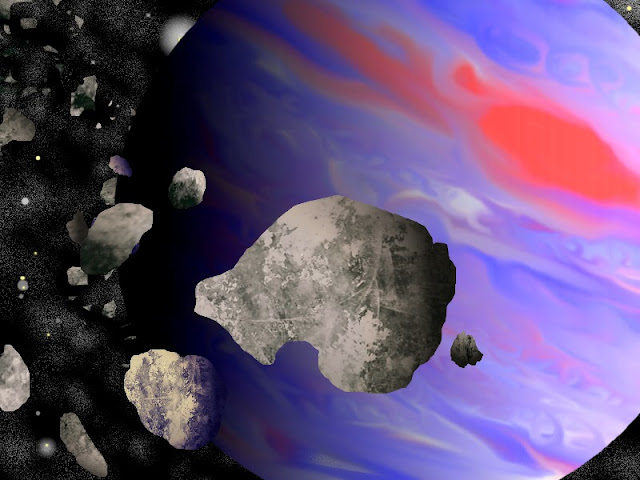My Aunt Emma was never a frilly, high-maintenance woman or extreme
housewife. She worked hard and spent a lot of time outside. Unlike
most women of her time, she’d rather be outside helping around the
house or on the farm than shopping or going to the hairdresser. Her
sisters would say that it started when she was little and played like
a tomboy, dressed in a dirty pair of overalls and carrying an old
stick to poke at frogs.
She
had no problem roaming around the countryside collecting bugs and
frogs with the boys. She’d run and jump into the red clay gulleys,
and build tree houses and forts. My grandmother was busy in the
kitchen cooking and canning with the older girls and she could never
get Emma into the house; she figured Emma would end up driving
tractors and helping with the farm animals, so she just didn’t
force the issue. Grandma figured that once a boy gave Emma a certain
look, she’d be in the kitchen frying chicken and begging to learn
to make an apple pie for him.
As
predicted, Emma, as she entered her teenage years, began to drive the
tractor during planting season and haymaking season. She herself was
in charge of the chickens and the two pigs destined to become pork
chops and bacon. (She was never squeamish about wringing the neck of
a chicken for Sunday dinner.) When it was time to pick cotton, she
was the first down the row with her sack, picking bolls and humming a
tune. One day someone asked her why she always hummed, she told them
that it scared off the snakes –no one argued with her and everybody started
to hum themselves.
Emma,
over the years, had become somewhat of a snake charmer. She had no
problem catching snakes with her bare hands. She’d put a hoe or
stick onto its head and grab it. It sent chills down my
grandmother’s spine to see Emma holding a big fat chicken snake,
its body wrapped around Emma’s arm. Emma would just laugh her big
boisterous laugh, then walk out to the woods and free it. Granddaddy
hated when she’d let a snake go rather than killing it, but Emma
explained that chicken snakes killed rats and mice – from then on,
he made her put the snakes in the corn crib.
Emma had no problem with rattlesnakes either. One day, grandma
caught her putting lard into a cook-pot, which was set up over a
fire. On a nearby table, there set bowls of cornmeal and buttermilk
beside a mounded plate of what looked like chicken. Emma told her
mother she was making supper, and went about breading the pieces of
meat. My grandmother grabbed the edge of the table when the blood
rushed from her brain, causing her to almost faint on the hard red
clay and gravel. She couldn't believe Emma was making fried chicken.
“Who told you how to fry? I am just amazed at my little girl.”
“Molly done told me what to do,” said Emma, giving the melting
lard a stir. She walked to the table and began to salt and pepper
the meat.
“Lord, I never expected to see you out here frying some chicken,”
said my grandmother, pulling out a handkerchief to dab her forehead.
“Oh, Mama, it ain’t chicken. I caught a big ol’ rattler down
in the slough and done skinned it,” replied Emma. She held up one
of the sections of rattlesnake meat. “It does look like a chicken
thigh, don’t it?”
Emma picked her mother up out of the dirt. “If’n I tan the hide,
would you help me make a hatband from it?” She pointed at a mess of rattlesnake skin handing from a low branch. My grandmother
figured that as long as Emma was cooking and wanting to sew
something, it was a battle won.
Emma went for years without any desire to do anything requiring her
to spend her day inside or doing something considered "girly", so it was a shock and a surprise when Emma
tried out for majorette in high school…and actually got it. She, for years,
had been twirling sticks and such on her way between the barn and the
field and back home. She had gotten pretty good. When she saw the
majorettes practicing one day near the gymnasium, she figured she
could do it just as well as they could. So she showed up at tryouts
with her twirling stick and gave them a show. Some of the other
girls giggled at this lanky girl in overalls twirling a piece of
wood, but the judges were impressed when Emma threw the stick high
into the air and then caught it without missing a beat. The giggles
went silent, and Emma was on the squad.
The hardest thing for Emma was adjusting to the majorette outfit.
She thought it looked like some spangled, bejeweled swimsuit and was
flat-out too girly for her tastes. She liked the boots, except for
the big tassels. It was a different time than nowadays, so the
uniforms the majorettes wore were a bit heavier and theatrical and
included little marching band hats with little visors and feathers.
Emma wasn’t too happy with all the fuss, she just wanted her
overalls and wooden stick, which itself was replaced with an official
metal baton with white rubber on the ends. She persevered and learned
the routine, eventually getting somewhat used to the uniform. She carried on as
well as she could.
The band spent the summer practicing and marching in a few small
parades. They would practice on the football field, but when the
football players needed it they moved to a nearby practice field. The
principal usually got old man Glenwood to use white paint to mark off the
field marks after the practice field was mowed. Well, this year Mr.
Glenwood had broken his leg in an accident and the chore went to his
temporary replacement, Jimmy Townsend. Jimmy was not reliable nor was
he smart, the field went unmowed and Mr. McGuire, the band
teacher, had to mark the field as well as he could. The band
eventually stomped down the grass and got into the rhythm of the
routine. At one point, the majorettes had to go to the sidelines and
do a mini-routine involving throwing their batons at each other and
catching them. They then stuck a pose as the band played its big
finale. Well, this time the majorettes walked to the edge of the
practice field, which was bordered by a creek, and Miriam yelled. In
front of her was curled a huge water moccasin, she had almost marched right onto it. She froze, one leg in the air mid-march. Emma ran
over to her and told Miriam to remain still. Emma took off her hat
(the majorettes wore them during practice to keep their smiling faces and heads
up), and then walked around behind the poisonous snake. She quickly
pushed the rubber ends of the metal baton onto the head of the snake, then reached down and grabbed
it. The snake opened its mouth and bared its fangs, its body
struggling to wrap around Emma’s arms; but Emma held it tight.
Jimmy Townsend came down the hill from the school’s shop, wondering
what in the world the commotion was. Emma grabbed her hat, and
motioned for one of Loretta Snellgrove’s little cymbals. She set
the snake expertly into the hat, covered it quickly with the cymbal, and
walked up to Jimmy Townsend.
“Jimmy, you didn’t mow the grass,” she said sternly.
“I was about to get to that,” he answered her.
“Well, Jimmy, we had a little episode out here on the field.” She
held up the hat covered with the cymbal, as Mr. McGuire walked up.
Emma looked at the band teacher and Mr. McGuire nodded his head.
“Take this, Jimmy,” she said, “And hold that cymbal tight
against the hat.
Jimmy took the hat from her. “What in the devil is this?” he
asked.
“That is a water moccasin that Miriam almost stepped on because you
can’t keep this field mowed and taken care of,” Emma told him.
The color drained from Jimmy’s face and he started to shake a bit.
“Be careful not to open it in an enclosed space.”
Jimmy walked to the edge of the creek and threw the hat, cymbal, and
snake into it. He then watched the snake swim on down the creek,
followed by a half-submerged majorette hat. The cymbal was never seen
again. Jimmy stormed off, cussing under his breath. But from then on, as long as
he was there as the groundskeeper, the grass on the practice field was mowed almost to the
dirt.
Emma never found her hat as it floated downstream, but it didn’t
matter. She became head majorette and marched at the head of the
band with the drum major, wearing a sparkling pair of white overalls
and twirling her favorite wooden stick.





